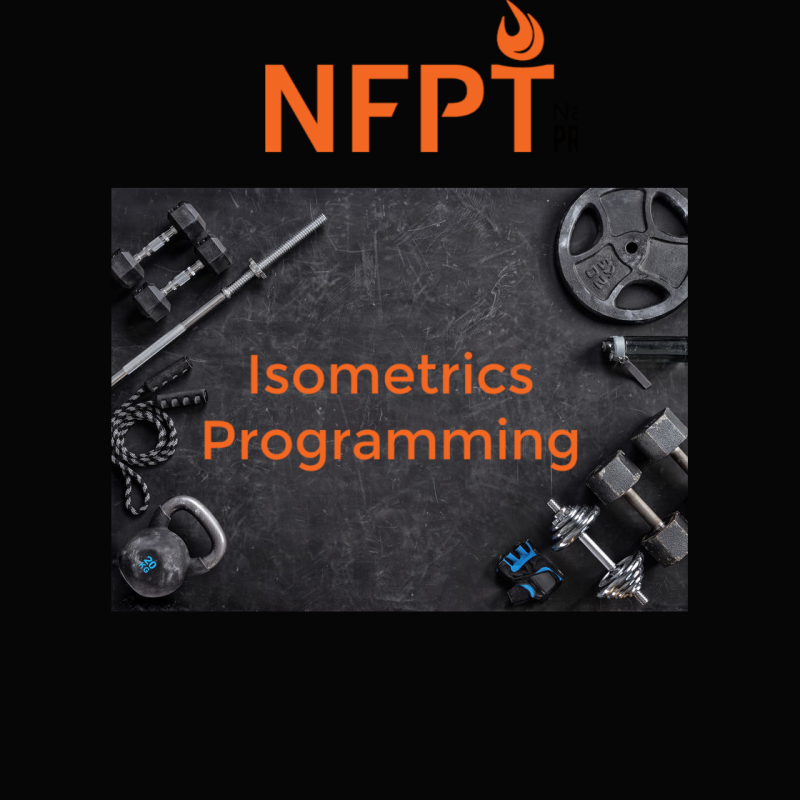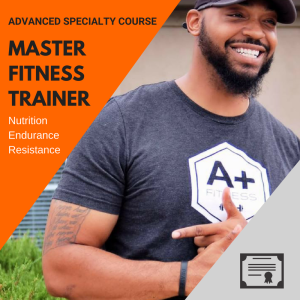
Isometrics refer to exercises wherein the muscles are producing force in the absence of movement. Think about pushing or pulling against immovable resistance, like a wall, or simply holding the weight of a barbell in bench press position for a designated period of time. You certainly feel tension in the chest, shoulders and arms, activating the muscle fibers; yet with equal forces against each other, no movement results.
Specific Types of Isometrics
Let’s review the three distinct approaches to isometric exercise:
Overcoming isometrics: Encompasses movements attempting to shift the position of an immovable object. Such isometric engagement transfers more energy to concentric strength rather than eccentric. This dramatically increases the demand placed upon one’s neurological pathways. Capable of cultivating pure strength over size, such short, intense bursts do not induce damage to muscle tissue.
Yielding isometrics: Refers to holding a weight against the resistance or pull of gravity, preventing it from falling. The neurological system gets taxed less if at all. Typically held longer than the aforementioned short bursts involved in overcoming isometrics, one will develop eccentric strength and growth over time.
Functional isometrics employs a static hold at a chosen stop during a lift, utilizing a decidedly shortened range of motion (also referred to as a “partial lift”). Once at the desired stopping point, the strongest position of the movement, the athlete holds anywhere from 6-10 seconds. Athletes often find that in performing such moves, over time they can achieve up to 50% more weight than a 1-rep max. Interestingly, as the neuromuscular system adjusts to the increased weight load, protective mechanisms get “desensitized”, allowing the individual to realize his or her full potential.
Training Smaller Muscles for Niche Clients
We often take for granted our fine motor skills, those movements requiring strong yet nimble small muscles in the palms and fingers. Isometrics can offer exercises for special populations who rely on small muscle skills to enhance their jobs or simply ADL.
A client who plays the piano and performs regularly could benefit from the insertion of small muscle isometric moves into her program. In addition, we often work with clients who cannot easily grip silverware or writing utensils. This deficiency can arise following a stroke or due to severe arthritis.
I once worked with a gentleman who, following a serious bicycle accident, had to regain the ability to pick up coins from a flat surface. Isometric exercises can help tremendously in strengthening such weakened hands and fingers, returning a measure of dexterity to the small muscles while enhancing one’s quality of life.
If you train such clients, consider adding a few simple movements to focus on key areas that have been damaged or weakened. Gripping a spring-loaded mechanism and holding that position will teach an individual to better control these muscles by building strength in the fingers and palms. If you observe a significant lack of hand strength, try starting instead with gripping and holding a rubber ball.
Understanding The Science
Research shows that if a muscle does not sustain a hard contraction, i.e. putting maximal effort into the contraction, then the body will only recruit a minimum number of fast-twitch fibers, (the ones most involved in muscular growth). Only by fully recruiting/fatiguing muscle fibers will they receive the stimulus to grow.
Muscular growth is influenced by maximal muscle tension when maintained longer than a typical dynamic exercise. Research conducted by Kanchisa et all, in 2002, revealed an average muscular growth of 12.4% when a maximal isometric contraction (100% Maximal Voluntary Contraction) was sustained for six seconds in each of 12 sets per training session, significantly higher than a group sustaining longer contractions with less weight, but equal volume.
With proper training, the body can recruit up to 10% more muscle fibers during a maximal isometric action than during the typical concentric or eccentric movement. Fiber recruitment directly affects neural strength; therefore, frequent isometric training can literally train the nervous system to boost efficiency of recruiting more muscle fibers.
The firing rate of the fibers soars during a maximal isometric action, more so than during a maximal eccentric action. So just like the body adapts to recruit more muscle fibers it can also get better at firing faster with isometric training. Not only do muscle fibers get stimulated with isometric exercises; bone mass, too, receives a boost.
Sample Isometric Exercises
Athletes in general tend to lack isometric and eccentric strength in comparison to their concentric (lifting) capabilities. A prudent trainer or coach seeks to incorporate isometric moves into any workout, regardless of the client’s weightlifting ability.Many of the traditional exercises often incorporated into a workout can be altered slightly to create more effective isometric moves. These exercises work best at the end of one’s training session.
Overcoming Isometric Examples
Trying to move the immovable: for each exercise, hold the “force” for 10 seconds, rest 2-3 minutes, and aim for 5 sets total.
- Push against a barbell loaded with 2x 1 RM
- Deadlift pull on a bar that can’t be lifted
Yielding Isometric Examples
Fighting eccentric forces: Hold a position against your chosen resistance at about halfway through the movement. For hypertrophy gains, time the rep concordant with the time under tension needed for a normal muscle-building set: 30-50 seconds. When using a weight load, for the hamstring move as well as the shrug, 60-80% of 1RM works well.
- Execute a bicep curl to just 90 degrees and hold it there, again lowering slowly when finished.
- Single-arm hang, bicep at 90 degrees
- Lying Hamstring curl, maintaining the peak contraction
- Hold a dumbbell shrug at the top, lowering slowly (fighting gravity)
Pair a yielding isometric with another for the same body part in a superset, or while resting the requisite 2-3 minutes, feel free to train a different body part. However, if the client demonstrates true fatigue, use the rest interval to walk a few laps around the track, if available.
Functional Isometric Examples
Some of the more common exercises we incorporate into clients’ workouts provide great opportunities for functional isometrics:
- planks
- glute bridges
- overhead static holds
- wall sits
Beginners can start by sustaining each of these for 30 seconds. A 60-second rest should suffice between each of the 5 sets. As a client advances, he can sustain for longer periods of time each workout session (a great challenge!) to facilitate isometric strength.
As with all such moves, encourage the client to push his limits safely, preventing injury, and allowing him to stop if soreness escalates into intense pain. For example, if he masters an isometric exercise hold for 10 seconds, he may choose to aim for 15 seconds the following time. Knowing you are prepared to spot him appropriately, should his muscles spasm or fail, can instill confidence in rising to such challenges. Always encourage proper form, never allowing supporting musculature to help with or take over the move. It often helps to have a client try out a few reps before embarking upon a full set of isometrics, so he knows and feels which muscles should activate during the move.
A Cautionary Note
Designing a safe isometric training program to avoid over-training and injury might involve working the legs and abdominals on Mondays and Fridays; the chest, shoulders and triceps on Tuesdays and Saturdays; and the back and biceps on Thursday and Sunday. This allows for Wednesday, mid-week, to become a rest day, essential for muscular growth and strength.
As always, keep in mind the client’s current and past health history. When performing isometric movements against considerable resistance, such exercises have the potential to increase blood pressure. If a client has reported a prior or current history of cardiovascular disease or stroke, ask him to speak with his healthcare professional prior to beginning an exercise program involving isometric exercises.
Helpful Hints
The subtleties of many isometric movements often get overlooked during the early learning stages. Remember to stress the following when introducing a client to the world of isometric exercises:
~ Squeeze hard
~ Practice “belly breathing”, which emanates from the lower abdominal region. Focus on inhaling for 5 counts, then exhaling for 5 counts
~ Work at various angles within the same exercises to help cultivate muscular strength
Isometric exercises offer diversity to a traditional bodybuilding workout. While most weightlifting exercises work large muscle groups, isometrics facilitate the isolation of small muscles. This lends creativity to workouts and prevents all-too-common overuse injuries resulting from heavy weight loads. Such training can complement any workout program, offering a multitude of rarely considered benefits, including strength gains amidst a plateau. After about 4 weeks, clients will begin to notice physical changes!
References:
www.active.com/fitness/articles/7-isometric-exercises-for-a-full-body-workout
www.healthline.com/health/fitness-exercise/isometric-exercises#5
www.womenshealthmag.com/fitness/g27530832/isometric-exercises-examples/
thibarmy.com/isometrics-underrated-training-tool/
https://woman.thenest.com/importance-isometric-exercises-10281.html
https://www.active.com/fitness/articles/7-isometric-exercises-for-a-full-body-workout
http://cdn2.hubspot.net/hub/52884/file-5411511-pdf/docs/ray.eadyupdated.pdf?t=1465387925266
https://shapeamerica.tandfonline.com/doi/abs/10.1080/02701367.1985.10605368#.XXVa1pNKiu4
https://www.ncbi.nlm.nih.gov/pubmed/12070620







